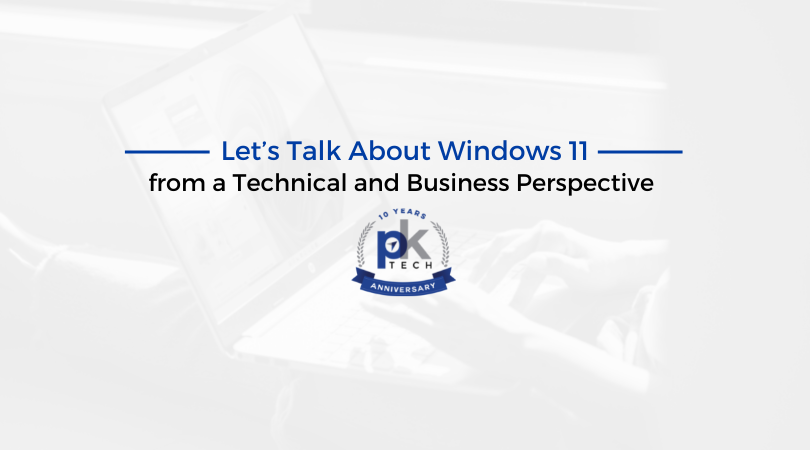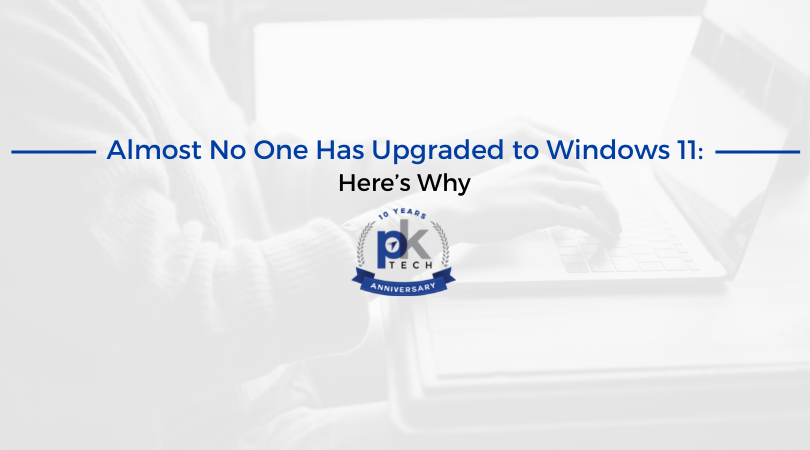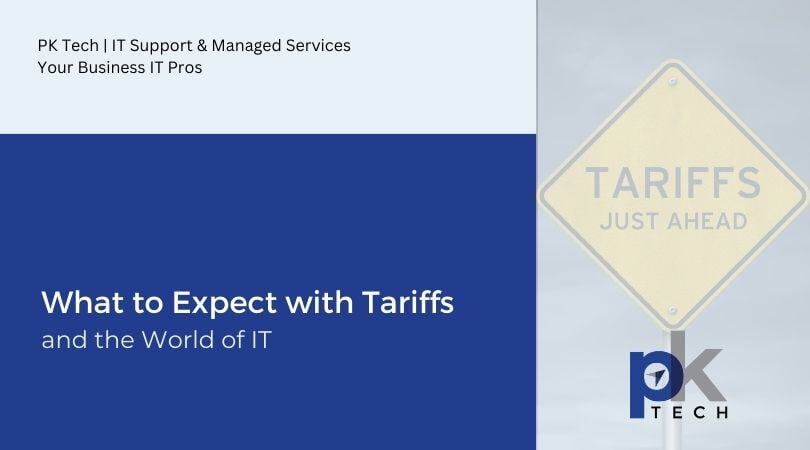Let’s Talk About Windows 11 from a Technical and Business Perspective
Let’s talk about Windows 11. While you may not want to hear about another upgrade for your PCs, let us have your attention for a minute because this...
Tariffs: the new buzzword across the globe. No matter your industry, business size (or the country you live in, for that matter), everyone is talking about what Trump’s tariffs will mean.
Tariffs–those often-confusing taxes on imported goods–can have ripple effects across many industries. But in the fast-moving, globally interconnected world of IT, they hit especially hard. Whether you’re running a small startup or managing procurement for a Fortune 500 company, understanding how tariffs impact IT is crucial to making smart decisions today and planning for tomorrow.
Let’s examine tariffs, recent changes to the IT landscape, and how your business might prepare for different outcomes over the coming months.
Let’s start with the burning question: how are recent tariffs introduced by the Trump administration specifically impacting IT equipment? Here’s what we know right now.
As of April 2025, the following tariffs primarily target imported IT equipment and components, leading to increased costs for businesses and consumers.
Key Tariffs Affecting IT:
1. Semiconductors and Integrated Circuits:Okay, so now you understand the hard numbers. On a more macro scale, what do these tariffs mean for businesses? How will this affect the IT equipment and software industry as a whole, and what is the trickle-down effect for companies, both large and small?
Many IT components, from servers and switches to laptops and networking gear, are manufactured overseas. When tariffs are imposed on countries that export these products, the result is simple: prices go up. Companies may find themselves paying significantly more for the same equipment they budgeted for last year.
This price hike doesn't just affect large-scale infrastructure — consumer devices like phones and routers are also affected, which can trickle down into higher operational costs for companies.
Tariffs can also complicate global supply chains. When manufacturers reroute production to avoid tariff-heavy regions, delays and shortages often follow. This can create backorders for critical IT equipment or limit access to specific hardware configurations.
While most tariffs target physical goods, software isn't entirely off the hook. Many software providers rely on global labor and infrastructure. If tariffs or trade tensions disrupt these arrangements, costs can be passed down to customers or cause delays in support and development cycles.
The evolving nature of trade policies has introduced uncertainty, affecting business planning and operations. The complete fallout of this is unknown.
Tariffs are often driven by global politics and can change with little warning. Read the news the past few days, and you’ll see what we mean. That’s why companies need a strategy that blends flexibility, foresight, and financial planning.
1. Audit Your Supply Chain
Know where your hardware comes from. Work with vendors who are transparent about their supply chains and who can offer alternatives in the event of tariff spikes or sourcing disruptions. Many vendors have distribution centers in the US. If the inventory arrived before the tariffs, then those goods will be tariff-free.
2. Negotiate with Vendors
Now’s the time to start renegotiating contracts. Consider locking in prices before any potential additional tariff hikes hit. Some vendors may offer tariff protection clauses or discounts for longer-term commitments.
3. Diversify Your Suppliers
If your business is heavily reliant on a single supplier or region, you may be vulnerable. Explore alternative vendors in different countries or those with domestic manufacturing options.
4. Invest in Cloud and Virtual Infrastructure
Cloud computing is less susceptible to tariffs than physical infrastructure. Transitioning parts of your IT infrastructure to the cloud can provide insulation from global pricing volatility and reduce dependency on imported hardware.
The million dollar question: buy now, or wait? We’re going to make a case for both sides, with thoughtful considerations for your business as we navigate uncertain economic times due to new tariff introductions.
Tariffs are just one piece of a complex global puzzle that impacts the cost, availability, and delivery of IT goods and services. The recent news headlines are alarming — but don’t let it cause your business to make panicked decisions.
As with any business decision or economic cause and effect, with the right preparation, companies can shield themselves from some of the worst of tariff effects.
Whether you choose to buy now or hold off, the key is to stay informed, remain flexible, and build strong relationships with vendors and partners. In a world where political shifts can change the price of a server overnight, being proactive isn’t just smart — it’s essential.
If your business is considering a software purchase or has general questions about IT equipment purchasing, we’re here to help. Schedule a time to chat with a member of the PK Tech team.

Let’s talk about Windows 11. While you may not want to hear about another upgrade for your PCs, let us have your attention for a minute because this...

Let’s start at the beginning. Your organization just qualified for cybersecurity insurance. In addition, you probably noticed your premium increased....

With all the hype around the Windows 11 release, why has barely anyone actually upgraded?
